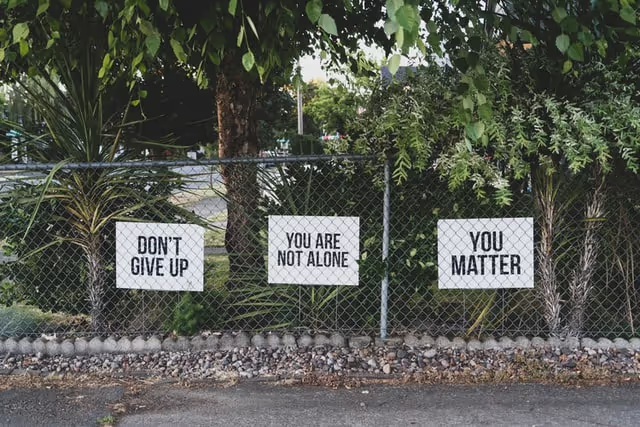After starting the conversation, it is important for the veteran to know that you seek to understand, validate, and support their experiences. Veterans may be reticent to talk because they do not trust you; this trust takes time. They may feel you have an agenda to fix them and they may be unwilling to part with aspects of their past and experiences.
Violent and traumatic events, coupled with military training and cultural norms may well cause the veteran to be to be hyper-vigilant and quick to defend themselves. They may be in a highly emotional state, or express anger, stress, and frustration.
Whenever possible, seek to reduce the intensity of the conflict or emotions. But first, when a veteran is in crisis, you must ensure safety for yourself. Then, consider some tried and tested active listening and de-escalation techniques.
ACTIVE LISTENING
Be sure to mindfully hear and attempt to comprehend what clients are trying to say. We are not all the best communicators, and physical and mental health issues, trauma, and a cultural tendency to “suck it up” require extra effort in interviewing. The following are steps to apply in active listening:
- Mirror: Repeat the last few words of a sentence to encourage the veteran to talk and give more information for you to work with.
- Paraphrase: Restate the content of what the veteran said to ensure that you actually understand their perspective. This also demonstrates that you care about what they are saying.
- Emotional Label: Label the emotions the veteran expresses to help bring them from an emotional state to a rational state.
- Summarize: Repeat the facts obtained during the Paraphrase stage and the Emotional Label attached to them in a single statement to demonstrate understanding and ensure that you and the veteran are on the same page.
GROUNDING TECHNIQUE
If a veteran is experiencing anxiety or disassociating, grounding skills can reorient them to the physical environment and space. These skills can be helpful to manage overwhelming feelings or acute anxiety and regain mental focus from an often intense emotional state.
- Sight: Ask the veteran to take a look around and comment on what they see. This can reorient them to the physical space.
- Sound: Ask what some calming sounds in the environment are that the veteran may hear. Ask them to describe what they are hearing in the room.
- Touch: Identify something for them to touch and describe like the arm of their chair or a coffee cup.
- Getting them back into their physical environment:
• Ask them to take ten slow, deep breaths and breathe with them.
• Do not ask them to close their eyes as they may be hyper-vigilant and feel the need to observe their space. Instead, encourage the veteran to make eye contact with you.
•Take a stretch together.
• Go to another room or area to start anew.
AVOID “JUDGING” STATEMENTS
We suggest you avoid statements that may sound judgmental. You may think this is a given, but many topics that you wish to explore during treatment may be loaded with innuendo. Some examples include:
- “How many people did you kill?” or “Did you kill anyone?” Though this may need to be discussed, it is not the responsibility of the provider to initiate. The veteran should bring this up on their own.
- “What do you think of the war?” This is a politically charged question and has no bearing in therapy. It can potentially push the veteran away from therapy or counseling.
- “Thank you for your service.” If you do not know the veteran or how the veteran perceives their military experience in the greater context of their own worldview, you run the risk of potentially making the veteran feel awkward or upset. This can affect whether and how the therapeutic relationship will develop.
OTHER SKILLS TO UTILIZE
- Empathy: This is the natural by-product of effective active listening. It implies identifying and understanding the veteran’s situation, feelings, and motives. Doing so indicates attitude and genuineness through tone, volume, and cadence.
The provider does not need to have gone through the same experience, but they do need to create a place for the individual to feel safe to discuss difficult trauma-related incidents.
- Rapport: This creates trust and mutual like-mindedness. Once empathy is established, rapport develops with the client. Themes are created, defensive mechanisms are explored.
When helping veterans explore traumatic experiences, the provider needs to build a relationship by asking factual logical questions and connecting the individual to resources when appropriate.
LETHAL MEANS SAFETY
Veterans may have a close connection to their firearm as it helped provide them safety during the military. Therefore, at home a veteran may feel compelled to keep a weapon on them, or in their home/car at all times in order to keep themselves and their loved ones safe. Nearly half of all veterans own a firearm.
Veterans may feel exposed, a loss of control, hyper-vigilant, or anxious without their firearm. Be sure to navigate this topic and discuss safely storing firearms for their own wellbeing, and help veterans be in control of the decision. Ensuring lethal means safety can help put important distance between a veteran and a firearm, and as most crises are temporary, help them manage the crisis safely.
The VA has created a great pocket guide for Means Safety Messaging for Clinical Staff.
They offer recommendations on how to start the conversation:
- “I’m glad you’re not having thoughts about suicide, but sometimes a crisis hits, and people can experience suicidal feelings. There are some things you can do to help ensure your safety if that were to happen. Would it be OK if we talked about this for a minute?”
- “Rates of suicide with firearms are high among veterans, and depression can increase risk for suicide. I am talking with all of my patients with signs of depression about things they can do to stay safe, including about firearms and medication safety.”
- Are you aware of options for safely storing firearms and medications when they are not in use?”
Safe storage is an essential part of the discussion. The pocket card has many recommendations to navigate safe storage. And for many veterans, using a buddy system with another veteran is often lifesaving. A veteran can create a pact with another veteran friend to give over their firearms temporarily for a friend to safely store while the veteran is in crisis. (State laws may limit temporary storage, so make sure to confirm the laws in your state.)








